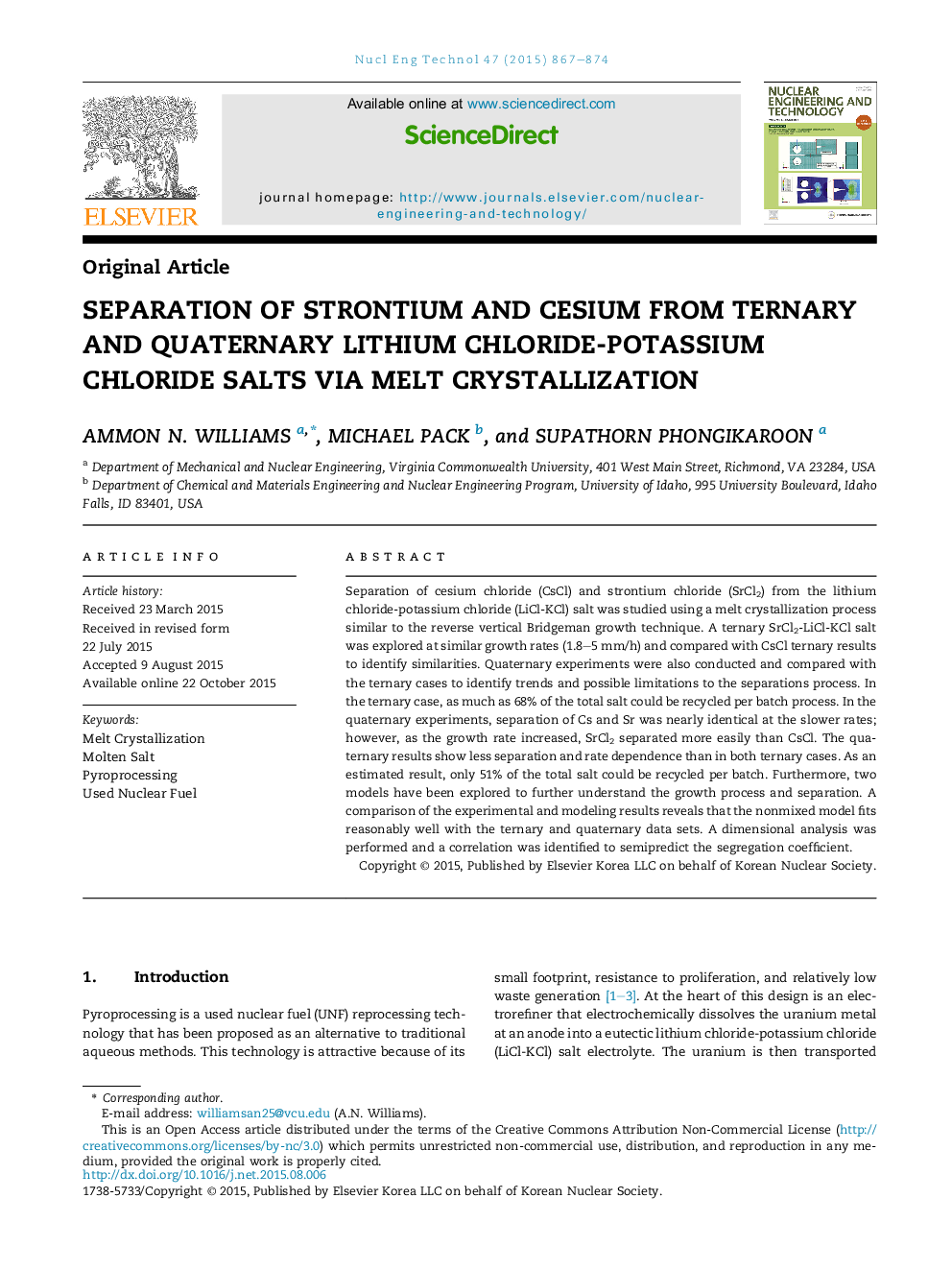| Article ID | Journal | Published Year | Pages | File Type |
|---|---|---|---|---|
| 1740066 | Nuclear Engineering and Technology | 2015 | 8 Pages |
Separation of cesium chloride (CsCl) and strontium chloride (SrCl2) from the lithium chloride-potassium chloride (LiCl-KCl) salt was studied using a melt crystallization process similar to the reverse vertical Bridgeman growth technique. A ternary SrCl2-LiCl-KCl salt was explored at similar growth rates (1.8–5 mm/h) and compared with CsCl ternary results to identify similarities. Quaternary experiments were also conducted and compared with the ternary cases to identify trends and possible limitations to the separations process. In the ternary case, as much as 68% of the total salt could be recycled per batch process. In the quaternary experiments, separation of Cs and Sr was nearly identical at the slower rates; however, as the growth rate increased, SrCl2 separated more easily than CsCl. The quaternary results show less separation and rate dependence than in both ternary cases. As an estimated result, only 51% of the total salt could be recycled per batch. Furthermore, two models have been explored to further understand the growth process and separation. A comparison of the experimental and modeling results reveals that the nonmixed model fits reasonably well with the ternary and quaternary data sets. A dimensional analysis was performed and a correlation was identified to semipredict the segregation coefficient.
